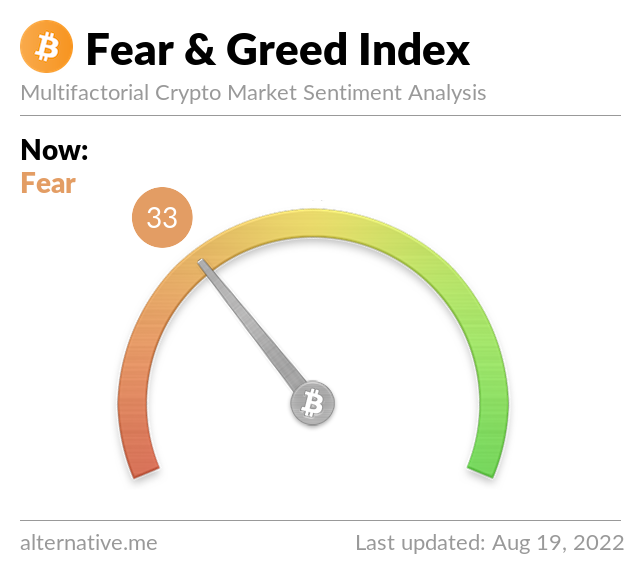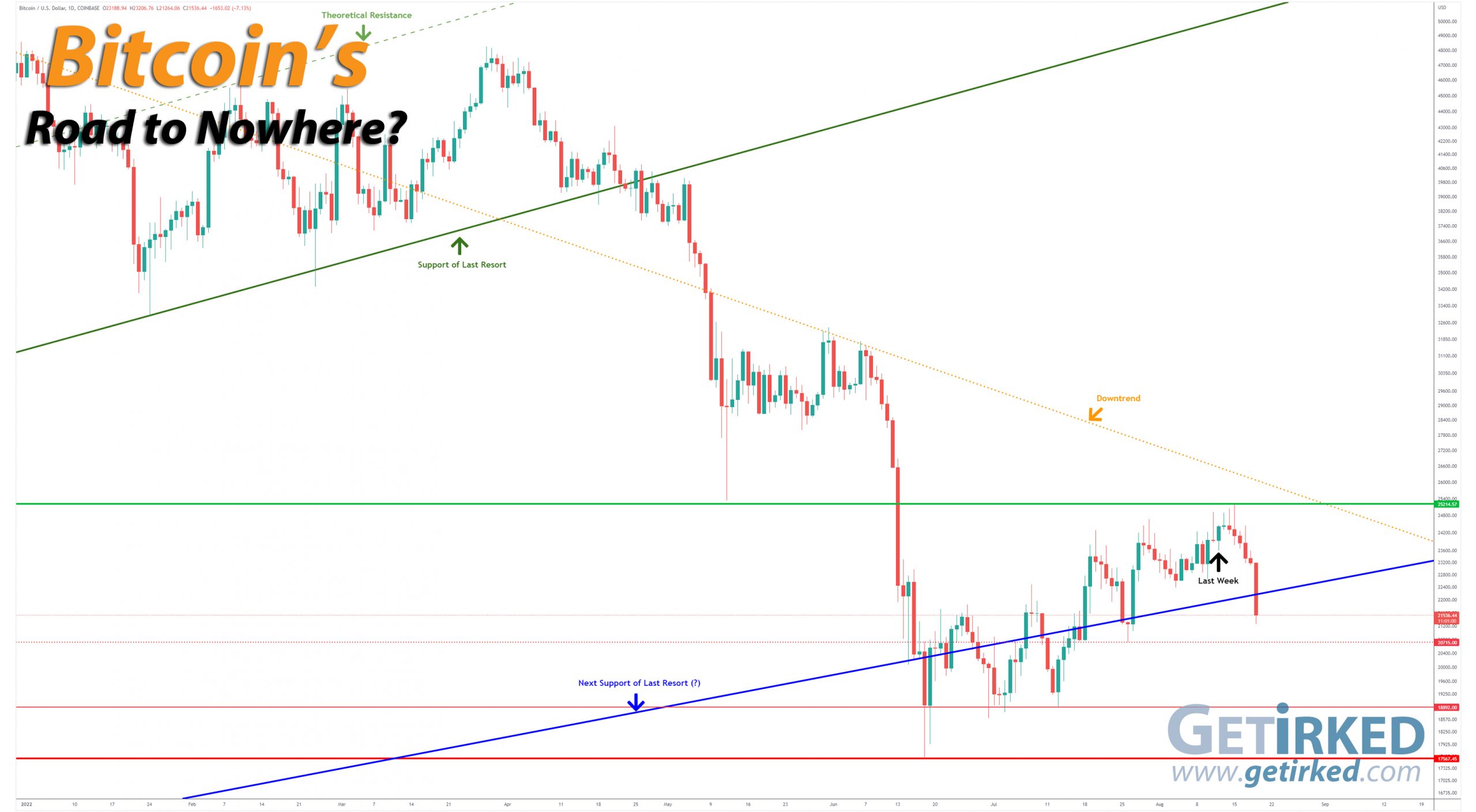Summing Up The Week
The market rallied throughout the majority of the week, and while it looked like it wanted to roll over on Wednesday, stocks seemed to recover during Thursday’s trading. Will this bull rally continue or are we do for a seasonal shock to the downside?
Let’s take a look at the news that moved the markets this week…
Market News
China’s economy is slowing
On Monday, China’s reported data for July came in below expectations with retail sales growing at 2.7% and industrial production rising by 3.8%, missing expectations for 5% and 4.6%, respectively, reported CNBC. With China’s economy second only to the United States’ in terms of size, the negative data does not portend strength for the global economy as a whole, and, as a result, stocks sold off after four weeks of substantial gains for the S&P 500 index.
“This year, the property market overall has shown a downward trend,” said Fu Linghui, spokesperson of the National Bureau of Statistics, according to a CNBC translation. “Real estate investment has declined, and may have had some impact on related consumption.”
Fed minutes say the beatings will continue until morale improves
On Wednesday, the market waited in anticipation for the release of the Federal Reserve Bank’s minutes from its July meeting which showed the Fed will likely not consider slowing interest rate hikes until inflation comes down substantially, reported CNBC. Since the Fed did not provide any detailed guidance for coming rate hikes, the market had to swallow the data (which, in reality, wasn’t surprising at all).
“With inflation remaining well above the Committee’s objective, participants judged that moving to a restrictive stance of policy was required to meet the Committee’s legislative mandate to promote maximum employment and price stability,” the minutes said. “Participants judged that a significant risk facing the Committee was that elevated inflation could become entrenched if the public began to question the Committee’s resolve to adjust the stance of policy sufficiently.”
As a result of the review of the minutes, the market didn’t know which way to go, whipsawing between substantial drops to flat performance and back to negative price action throughout the trading day on Wednesday.
Previously-owned home sales dropped nearly 6% in July
On Thursday, the National Association of Realtors announced that the sales of previously-owned homes dropped nearly 6% in July compared with June, reported CNBC. On a year-over-year basis, sales have dropped around 20% from July 2021, not a good sign for the strength of the housing market which led some analysts to claim that the U.S. has entered a housing recession.
“In terms of economic impact we are surely in a housing recession because builders are not building,” said Lawrence Yun, chief economist for the Realtors. “However, are homeowners in a recession? Absolutely not. Homeowners are still very comfortable financially.”
In a counterintuitive move, although closed sales numbers decreasing, home sales prices are still increasing. “The median home sales price continued to climb, but at a slower pace for the fifth consecutive month, shining a light on how downshifting buyer demand is moving the housing market back toward a more normal pace of activity,” said Danielle Hale, chief economist at Realtor.com. “A look at active inventory trends shows that home listings were nearly twice as likely to have had a price cut in July 2022 compared to one year ago.”
Next Week’s Gameplan
Many analysts believe the S&P 500 will pull back significantly from its recent highs which falls in line with the seasonality that suggests a -4.5% to 20%+ pullback from August’s high to a low later in Q3/Q4 of the year.
What does this mean? That it probably won’t happen.
In all seriousness, when a consensus starts to form – either bullish or bearish – I begin ensuring my gameplan accounts for the opposing view. This is not to say that I’m suddenly bullish and believe higher highs are in store for the markets, it simply means I continue to have updated selling targets for positions that decide to continue to rally.
In the meantime, I hope you all enjoy the “Dog Days of Summer” and I’ll see you back here next week!
This Week in Play
Stay tuned for this week’s episodes of my two portfolios Investments in Play and Speculation in Play coming online later this weekend!
Crytpo Corner
Important Disclaimer
Get Irked contributors are not professional advisers. Discussions of positions should not be taken as recommendations to buy or sell. All investments carry risk and all readers must accept their own risks. Get Irked recommends anyone interested in investing or trading any asset class consult with a professional investment adviser to determine if an investment idea is suitable to them and their investment goals.
Bitcoin Price (in USD)
%
Weekly Change
Bitcoin Price Action
A new high and then a crash for Bitcoin…
Bitcoin continued making new monthly highs this week, finally hitting $25,214.57 on Sunday night before pulling back. The cryptocurrency sector weakened throughout the week as concerns of inflation and economic headwinds caused investors and traders to pull back on all high-risk assets.
On Thursday, Bitcoin lost all support and broke through its weekly low at $22,392.88 before finding brief support early Friday morning. Now, its next low of support is $20,715.00 followed by $18,892.00 and then its 2022 low of $17,567.45.
The Bullish Case
Despite the late-week pullback, Bulls point to the institutional activity in the space and how far Bitcoin has bounced off its 2022 lows as signs that the bottom is in. Even the more less bullish Bulls believe that $17,567.45, Bitcoin’s current all-time low since its $69K all-time high, will hold in the event of a test.
The Bearish Case
Bears adhere to the macro downward trend and argue that the current crash is the beginning of a new drop to lower lows. With everything working against the cryptocurrency space both in terms of global economic issues combined with excessive liquidity still in the space with so many firms leveraged to the hilt, it’s hard to disagree with the bearish outlook… there truly aren’t any positive catalysts on the horizon currently.
Bitcoin Trade Update
Current Allocation: 15.641% (+0.128% since last update)
Current Per-Coin Price: $23,761.21 (-0.131% since last update)
Current Profit/Loss Status: -9.363% (-9.549% since last update)
Bitcoin broke through the $25K mark and triggered my next sell order which filled at $25,077.26 on Sunday. Once again, I’m only taking small quantities off the table for this long-term play, so the sale only lowered my per-coin cost -0.040% from $23,792.46 down to $23,783.06, and decreased my allocation -0.128% from 15.513% to 15.385%.
When Bitcoin crashed on Thursday, it filled a few orders which gave me an average buying price of $22,520.09 (after fees) which lowered my per-coin fractionally -0.092% from $23,783.06 to $23,761.21 as I’m only buying small quantities since I feel Bitcoin could have lower-lows in store for us.
Bitcoin Buying Targets
Using Moving Averages and supporting trend-lines as guides, here is my plan for my next ten (10) buying quantities and prices:
0.147% @ $20,852
0.147% @ $20,086
0.293% @ $19,555
0.879% @ $18,609
1.172% @ $17,609
1.465% @ $16,236
1.465% @ $15,277
1.026% @ $14,690
1.465% @ $13,559
1.465% @ $12,530
No price target is unrealistic in the cryptocurrency space – Bullish or Bearish.
While traditional stock market investors and traders may think the price targets in the cryptocurrency space are outlandish due to the incredible spread (possible moves include drops of -90% or more and gains of +1000% or more), Bitcoin has demonstrated that, more than any speculative asset, its price is capable of doing anything.
Here are some of Bitcoin’s price movements over the past couple of years:
- In 2017, Bitcoin rose +2,707% from its January low of $734.64 to make an all-time high of $19,891.99 in December.
- Then, Bitcoin crashed nearly -85% from its high to a December 2018 low of $3128.89.
- In the first half of 2019, Bitcoin rallied +343% to $13,868.44.
- In December 2019, Bitcoin crashed -54% to a low of $6430.00 in December 2019.
- In February 2020, Bitcoin rallied +64% to $10,522.51.
- In March 2020, Bitcoin crashed nearly -63% to a low of $3858.00, mostly in 24 hours.
- Then, Bitcoin rallied +988% to a new all-time high of $41,986.37 in January 2021.
- Later in January, Bitcoin dropped -32% to a low of $28,732.00.
- In February 2021, Bitcoin rallied +103% to a new all-time high of $58,367.00.
- Later in February, Bitcoin dropped -26% to a low of $43,016.00.
- In April 2021, Bitcoin rallied +51% to a new all-time high of $64,896.75.
- In June 2021, Bitcoin crashed -56% to a low of $28,800.00.
- In November 2021, Bitcoin rallied +140% to a new all-time high of $69,000.00.
- In June 2022, Bitcoin crashed -75% to a low of $17,567.45.
- In August 2022, Bitcoin rallied +44% to a high of $25,214.57.
Where will Bitcoin go from here? Truly, anything is possible…
What if Bitcoin’s headed to zero?
The only reason I speculate in the cryptocurrency space is I truly believe Bitcoin isn’t headed to zero. I am prepared for that possibility, however, by knowing I could potentially lose all of the capital I’ve allocated to this speculative investment. Professional advisers recommend speculating with no more than 5% of an investor’s overall assets. Personally, I’ve allocated less than that to speculating in crypto. I feel that anyone who doesn’t fully believe in the long-term viability of cryptocurrency would be better served not speculating in the space. On a good day, this asset class isn’t suitable for those with weak stomachs. On volatile days, the sector can induce nausea in the most iron-willed speculator. If a speculator isn’t confident in the space, the moves will cause mistakes to be made.


